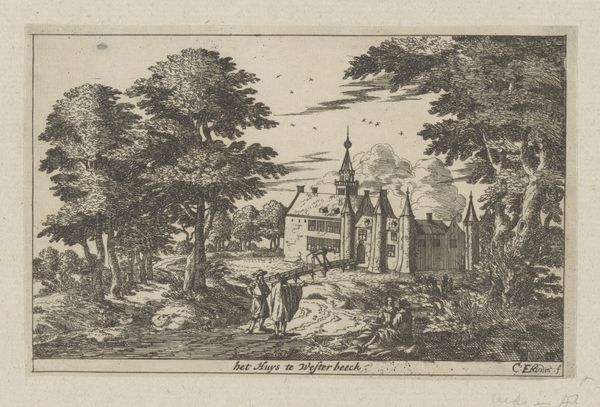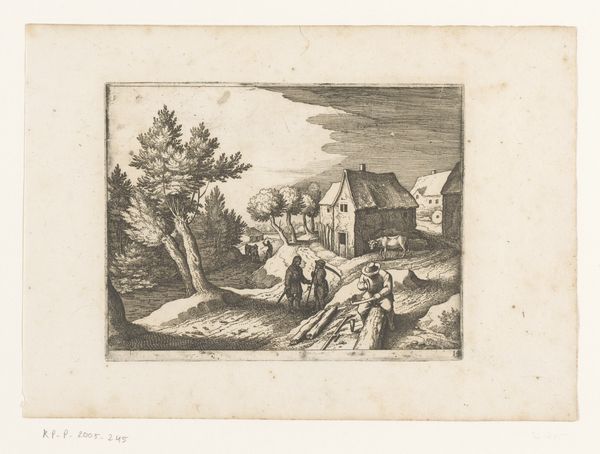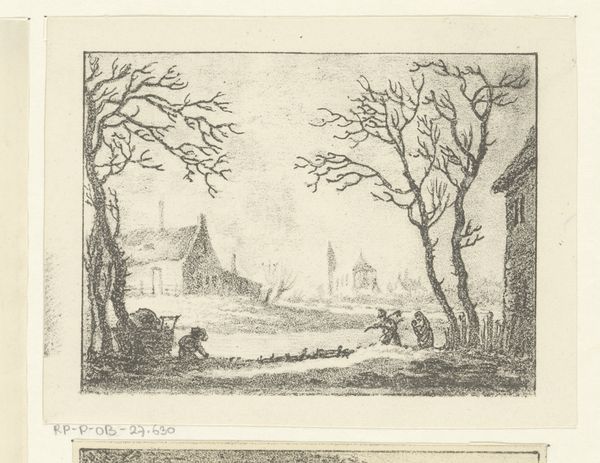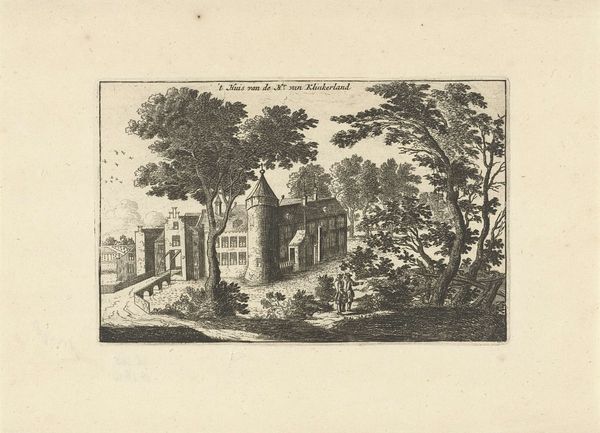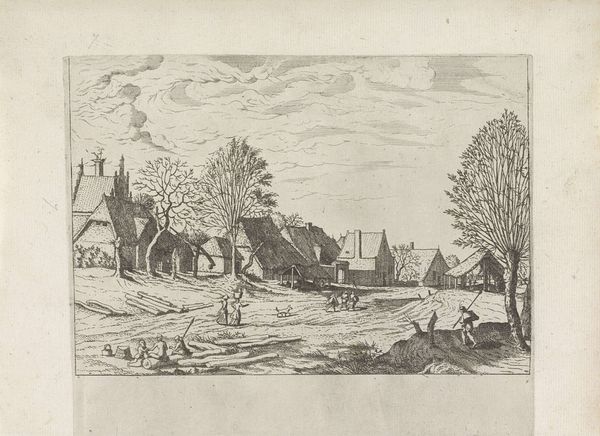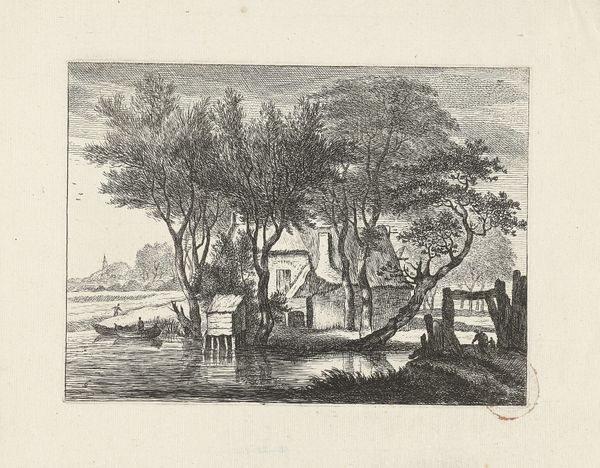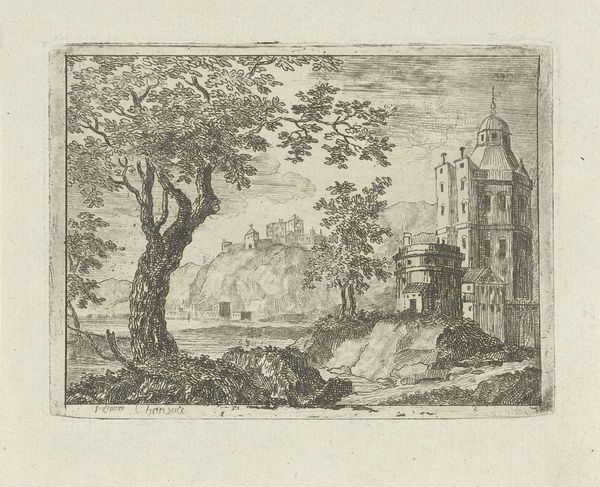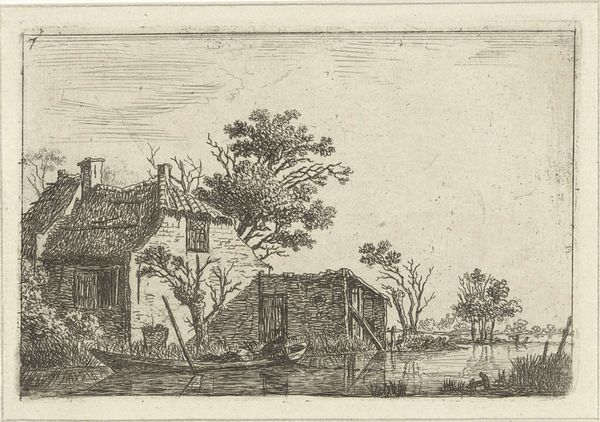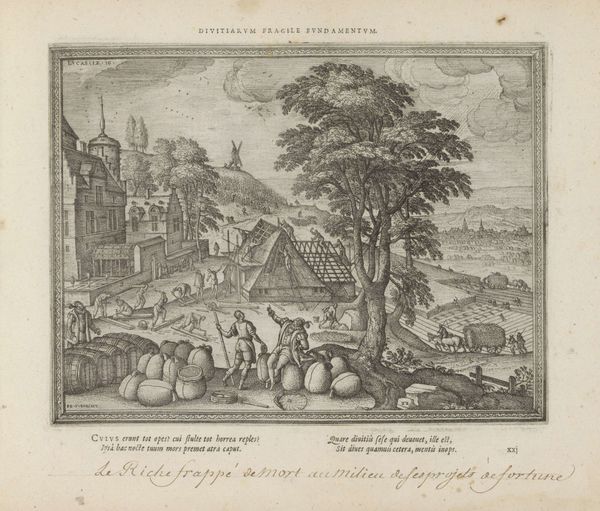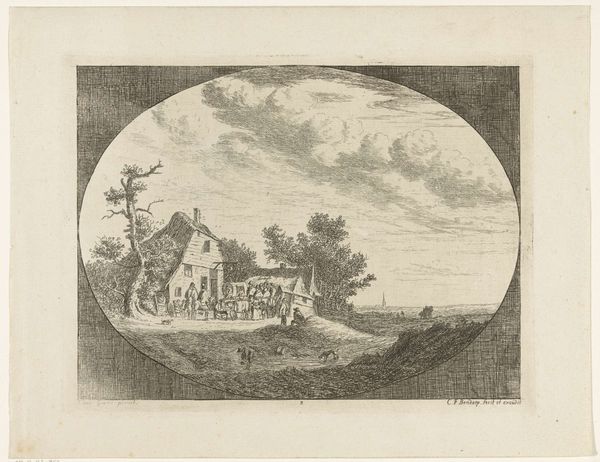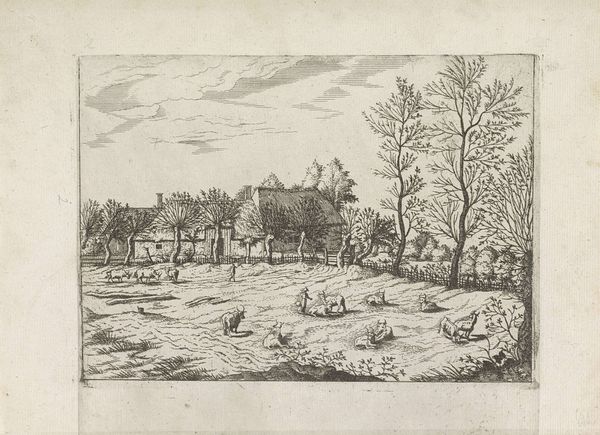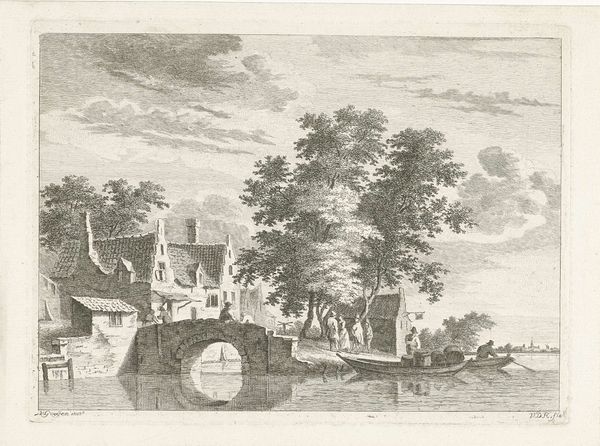
print, engraving
#
aged paper
#
toned paper
#
light pencil work
#
dutch-golden-age
# print
#
old engraving style
#
sketch book
#
landscape
#
personal sketchbook
#
pen-ink sketch
#
line
#
sketchbook drawing
#
genre-painting
#
storyboard and sketchbook work
#
sketchbook art
#
engraving
Dimensions: height 73 mm, width 89 mm
Copyright: Rijks Museum: Open Domain
Curator: This is "Figuren op het ijs," or "Figures on the Ice," an engraving dating from around 1613 to 1638. Editor: My initial impression is one of dynamic energy contained within a delicate, almost miniature world. The circular format focuses the eye intensely. Curator: Exactly! Notice how the composition mimics the economic and social realities of the time. We see the quotidian activities of villagers rendered through the craft of engraving. Who made these tools? Where did they get them from? What lives did the villagers live? These engravings would have been consumed as relatively affordable and reproducible prints for domestic settings. Editor: The delicate network of lines describing the figures is striking, each stroke carefully delineating form and movement, while the aerial perspective establishes spatial depth and the compositional harmony inherent within the engraving. This demonstrates a keen understanding of balance. Curator: True. The production and consumption of prints like these also point to an emerging middle class and evolving tastes in art—a departure from purely religious or aristocratic commissions. It seems such simple scenes offered new venues to make a living for artists and vendors. Editor: Certainly, but the figures themselves offer an entire world: from their stances to their clothing to their sleds and bundles and barrels! The etching technique serves the content, lending an intimate narrative quality as the people appear oblivious to our attention; we are voyeurs. Curator: We can appreciate the artist’s technique while considering how Dutch art and economics became deeply intertwined, reflecting not just aesthetics, but shifts in labor and wealth. What at first glance appears as only entertainment on a frigid winter’s day belies much more. Editor: In its understated elegance, the piece becomes more evocative, less literal. The lack of bold colors amplifies the subtleties, resulting in an almost dreamlike echo of that period, where what is absent may actually have presence. It captures a quiet sense of drama while still hinting to much, much more.
Comments
No comments
Be the first to comment and join the conversation on the ultimate creative platform.
